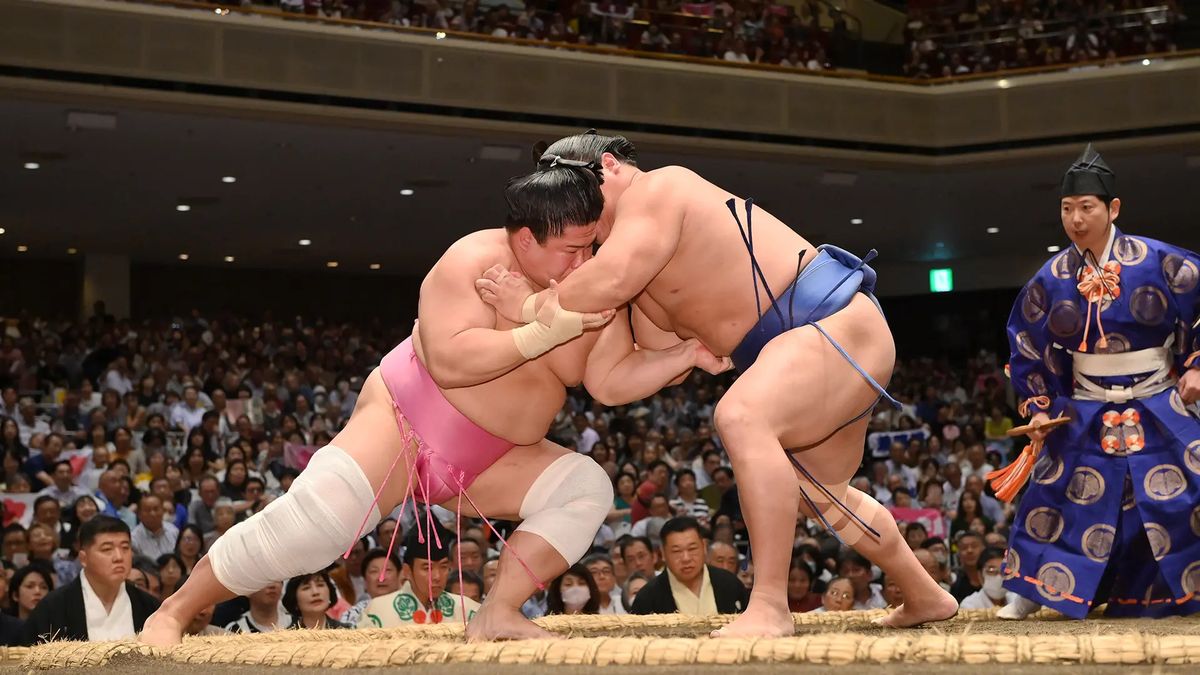
Sumo wrestling is more than just a sport; it's a rich tapestry of tradition, culture, and history. Originating in Japan, this ancient martial art has captivated audiences for centuries. But how much do you really know about sumo? From the rigorous training regimes of the wrestlers, known as rikishi, to the sacred rituals performed before each match, sumo is steeped in fascinating details. Did you know that sumo wrestlers live in communal training stables called heya? Or that their diet is meticulously planned to help them gain weight? Sumo wrestling isn't just about size and strength; it's a blend of skill, strategy, and respect. Ready to dive into 28 intriguing facts about this unique sport? Let's get started!
The Origins of Sumo Wrestling
Sumo wrestling, a sport deeply rooted in Japanese culture, has a history that spans centuries. Let's dive into some fascinating facts about this ancient sport.
- Sumo wrestling dates back over 1,500 years, making it one of the oldest organized sports in the world.
- Originally, sumo was performed as a ritual to entertain the Shinto gods, known as kami.
- The first recorded sumo match took place in 23 BC, according to Japanese legend.
Rituals and Traditions
Sumo wrestling isn't just about strength and skill; it's also rich in rituals and traditions that have been preserved through the ages.
- Before each match, wrestlers perform a series of rituals, including stomping their feet to drive away evil spirits.
- Wrestlers throw salt into the ring to purify it, a practice rooted in Shinto beliefs.
- The referee, called a gyoji, wears traditional clothing that resembles a Shinto priest's attire.
The Sumo Ring (Dohyo)
The dohyo, or sumo ring, is a sacred space with specific rules and characteristics.
- The dohyo is made of clay and covered with a layer of sand.
- It measures 4.55 meters in diameter and is elevated 34 to 60 centimeters above the ground.
- The ring is rebuilt for each tournament to ensure its sanctity and integrity.
Sumo Wrestlers (Rikishi)
Sumo wrestlers, known as rikishi, lead disciplined lives dedicated to their sport.
- Rikishi live in communal training stables called heya, where they train, eat, and sleep.
- Wrestlers follow a strict diet, often consuming a high-calorie stew called chanko-nabe to gain weight.
- There are six divisions in sumo, with the top division being the makuuchi.
Sumo Tournaments (Basho)
Sumo tournaments, known as basho, are held six times a year and are major events in Japan.
- Each tournament lasts 15 days, with wrestlers competing once per day.
- The wrestler with the best record at the end of the tournament is declared the champion and receives the Emperor's Cup.
- The most prestigious tournament is held in Tokyo at the Ryogoku Kokugikan arena.
Sumo Rankings
Sumo wrestlers are ranked based on their performance in tournaments, with a hierarchical system in place.
- The highest rank a wrestler can achieve is yokozuna, or grand champion.
- To become a yokozuna, a wrestler must win two consecutive tournaments in the top division.
- There are currently only a few active yokozuna at any given time, making it a highly prestigious title.
Sumo Attire
The attire worn by sumo wrestlers is unique and steeped in tradition.
- Wrestlers wear a mawashi, a thick belt made of silk, during matches.
- The color and style of the mawashi can indicate a wrestler's rank and stable.
- Outside the ring, wrestlers wear traditional Japanese clothing, such as yukata and kimono.
Sumo and Popular Culture
Sumo wrestling has made its mark on popular culture, both in Japan and around the world.
- Sumo wrestlers often appear in advertisements, TV shows, and movies in Japan.
- The sport has inspired various video games, including the popular "Sumo Wrestling" arcade game.
- Sumo has also influenced other sports, such as professional wrestling and mixed martial arts.
Health and Longevity
Despite their large size, sumo wrestlers are known for their surprising agility and strength.
- Sumo wrestlers typically retire in their 30s, often transitioning to coaching or other roles within the sumo community.
- After retirement, many wrestlers lose significant weight and lead healthier lifestyles.
- The intense training and physical demands of sumo can lead to health issues, but many former wrestlers live long, fulfilling lives.
Sumo's Global Influence
Sumo wrestling has gained international popularity, with fans and practitioners around the world.
- Sumo clubs and tournaments can be found in countries such as the United States, Brazil, and Mongolia, showcasing the sport's global appeal.
The Final Bell
Sumo wrestling isn't just a sport; it's a cultural phenomenon steeped in tradition and rituals. From the rigorous training of the wrestlers to the sacred dohyo, every aspect of sumo reflects centuries-old customs. The colorful mawashi, the ceremonial salt throwing, and the strict hierarchy within the stables all contribute to the sport's unique charm.
Sumo's influence extends beyond Japan, captivating audiences worldwide with its blend of athleticism and spirituality. Whether you're a casual observer or a dedicated fan, understanding these fascinating facts enriches your appreciation of the sport.
So next time you watch a sumo match, remember the rich history and cultural significance behind every move. Sumo isn't just about strength; it's about honor, discipline, and respect. Dive into this world, and you'll find there's much more than meets the eye.
Was this page helpful?
Our commitment to delivering trustworthy and engaging content is at the heart of what we do. Each fact on our site is contributed by real users like you, bringing a wealth of diverse insights and information. To ensure the highest standards of accuracy and reliability, our dedicated editors meticulously review each submission. This process guarantees that the facts we share are not only fascinating but also credible. Trust in our commitment to quality and authenticity as you explore and learn with us.
